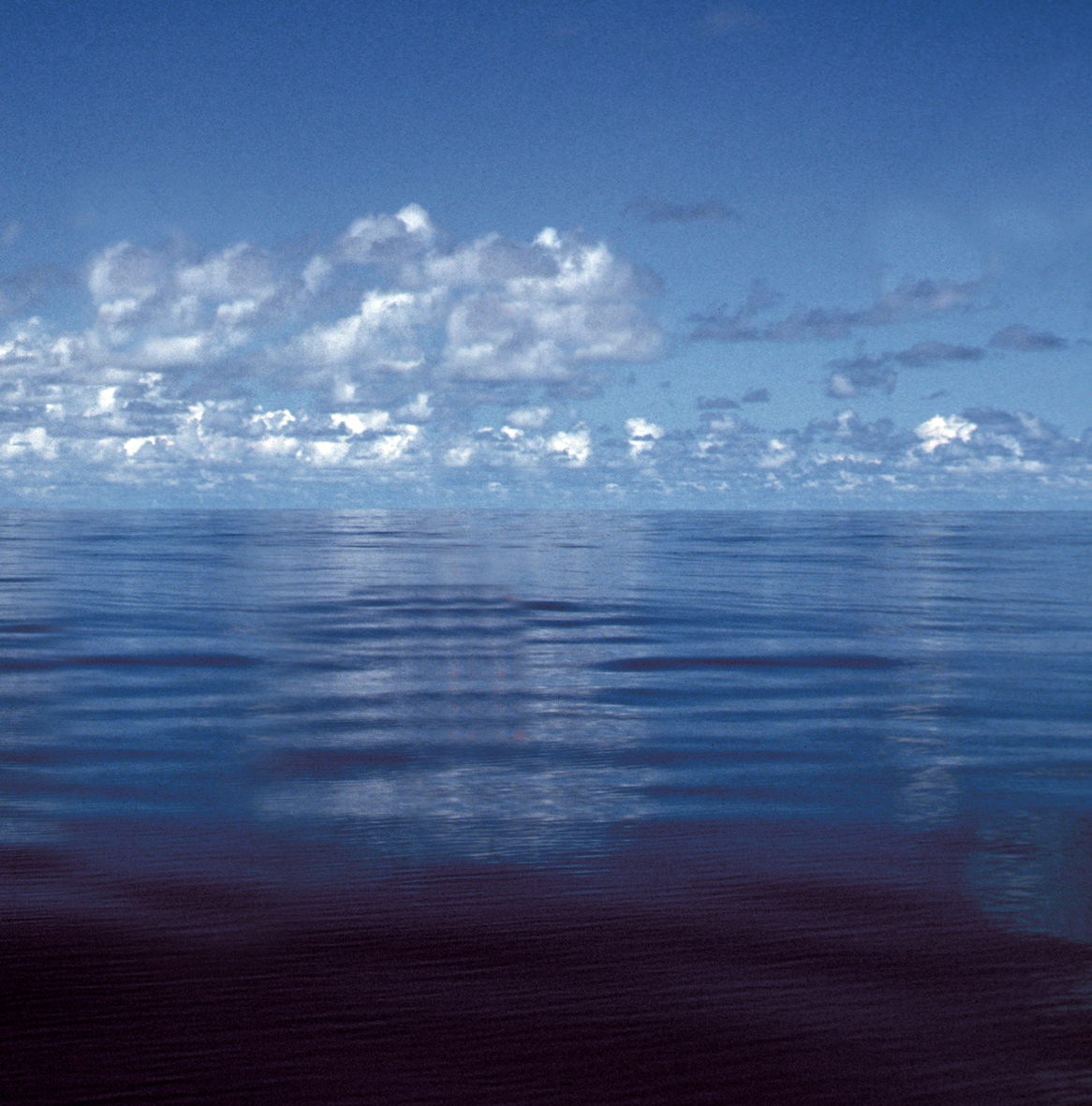The oceans of the world play a fundamental role in the climate system:
- They absorb much of the heat radiated by the sun and transport this heat around the globe through currents, eddies and gyres.
- They are the main long-term sink for atmospheric carbon dioxide and play an important role in controlling the rate at which carbon dioxide is increasing in the atmosphere.
- They are the source of water in the hydrological cycle.
As our climate changes, so too do ocean conditions and processes. This is not only affecting life in the ocean but also life on the land, as the ocean changes then feedback into the climate system, causing further changes.

Ocean warming
The oceans have warmed over the last 50 years, with the largest warming being found in the upper several hundred metres. Of the oceans and seas around Australia, the Tasman Sea has warmed the fastest.
Marine species found in New South Wales have been identified in Tasmanian waters, carried by the southward flow of the East Australian Current.
There is evidence of ocean change in the remotest parts of the planet.
During research voyages in 2005, scientists working in the Southern Ocean found that at every measurement site in the deep basin adjacent to Antarctica, waters near the sea floor were cooler and less salty than they were a decade ago.
Sea-level rise and coastal erosion
As water in the ocean warms it expands, raising the sea level. This increase is being augmented by additions of water to the ocean from melting ice. In the 20th century, global average sea level rose by almost 20cm.
Long records of tides and sea level at Fremantle and Sydney show high tide events that occurred once in five years before 1950 have occurred once every two years since 1950.
Over the last century, about 70 per cent of the world's sandy shorelines have been in retreat.
As sea levels continue to rise, continued coastal erosion is expected, resulting in the landward movement of the coastline.
Oceans and carbon
Over the last two centuries, humans have emitted about 480 billion tonnes of carbon to the atmosphere as a result of deforestation and burning fossil fuels. Of this, the oceans have absorbed between 99 and 137 billion tonnes.
This enormous amount of carbon entering the oceans as carbon dioxide has changed the chemistry of the oceans, making them slightly more acidic.
The consequences of this change in ocean chemistry are not well understood yet, but are likely to include changes to the ability of certain marine organisms to maintain their skeletons or shells.
The oceans of the world play a fundamental role in the climate system:
- They absorb much of the heat radiated by the sun and transport this heat around the globe through currents, eddies and gyres.
- They are the main long-term sink for atmospheric carbon dioxide and play an important role in controlling the rate at which carbon dioxide is increasing in the atmosphere.
- They are the source of water in the hydrological cycle.
As our climate changes, so too do ocean conditions and processes. This is not only affecting life in the ocean but also life on the land, as the ocean changes then feedback into the climate system, causing further changes.
Ocean warming
The oceans have warmed over the last 50 years, with the largest warming being found in the upper several hundred metres. Of the oceans and seas around Australia, the Tasman Sea has warmed the fastest.
Marine species found in New South Wales have been identified in Tasmanian waters, carried by the southward flow of the East Australian Current.
There is evidence of ocean change in the remotest parts of the planet.
During research voyages in 2005, scientists working in the Southern Ocean found that at every measurement site in the deep basin adjacent to Antarctica, waters near the sea floor were cooler and less salty than they were a decade ago.
Sea-level rise and coastal erosion
As water in the ocean warms it expands, raising the sea level. This increase is being augmented by additions of water to the ocean from melting ice. In the 20th century, global average sea level rose by almost 20cm.
Long records of tides and sea level at Fremantle and Sydney show high tide events that occurred once in five years before 1950 have occurred once every two years since 1950.
Over the last century, about 70 per cent of the world's sandy shorelines have been in retreat.
As sea levels continue to rise, continued coastal erosion is expected, resulting in the landward movement of the coastline.
Oceans and carbon
Over the last two centuries, humans have emitted about 480 billion tonnes of carbon to the atmosphere as a result of deforestation and burning fossil fuels. Of this, the oceans have absorbed between 99 and 137 billion tonnes.
This enormous amount of carbon entering the oceans as carbon dioxide has changed the chemistry of the oceans, making them slightly more acidic.
The consequences of this change in ocean chemistry are not well understood yet, but are likely to include changes to the ability of certain marine organisms to maintain their skeletons or shells.
